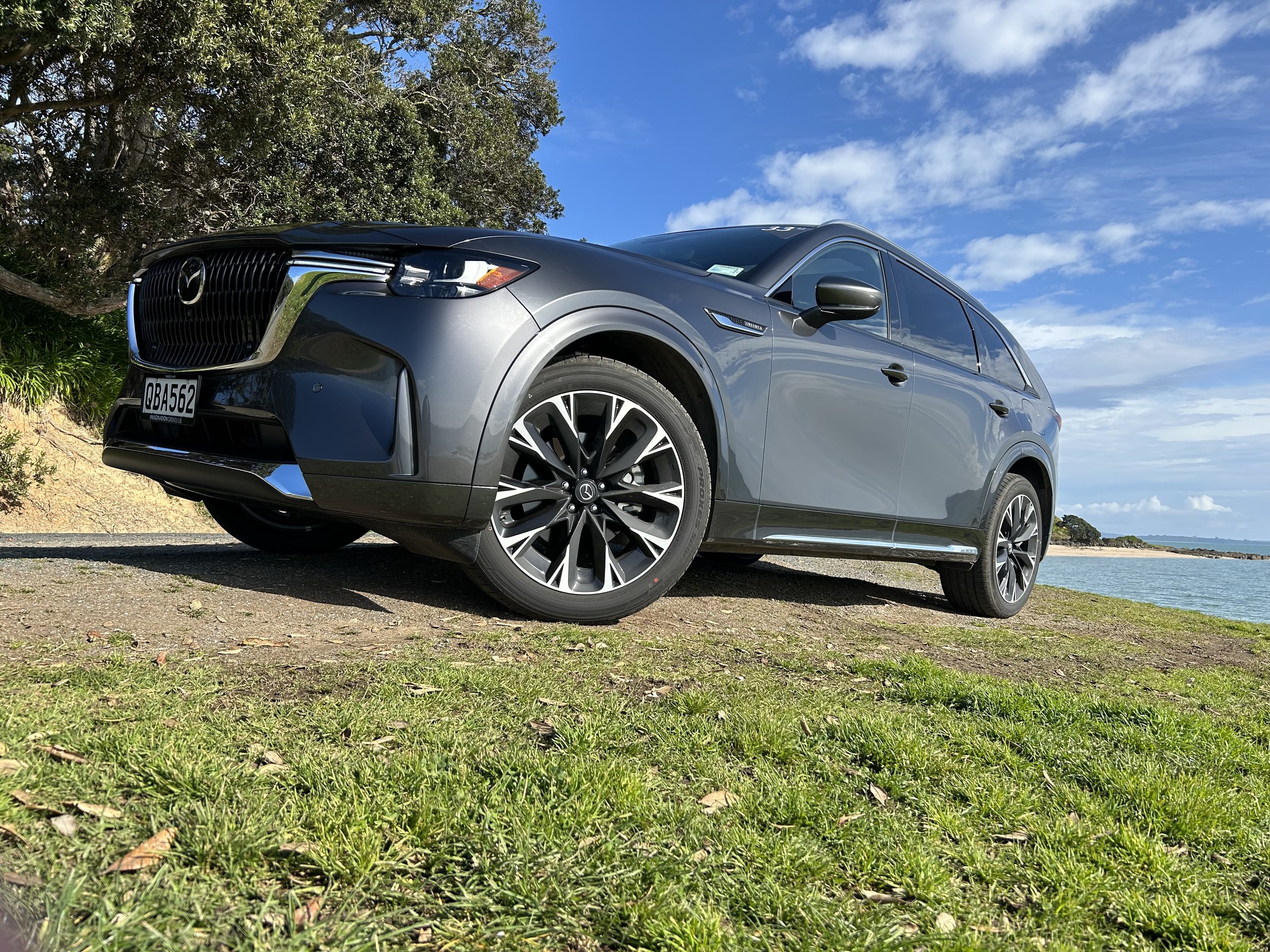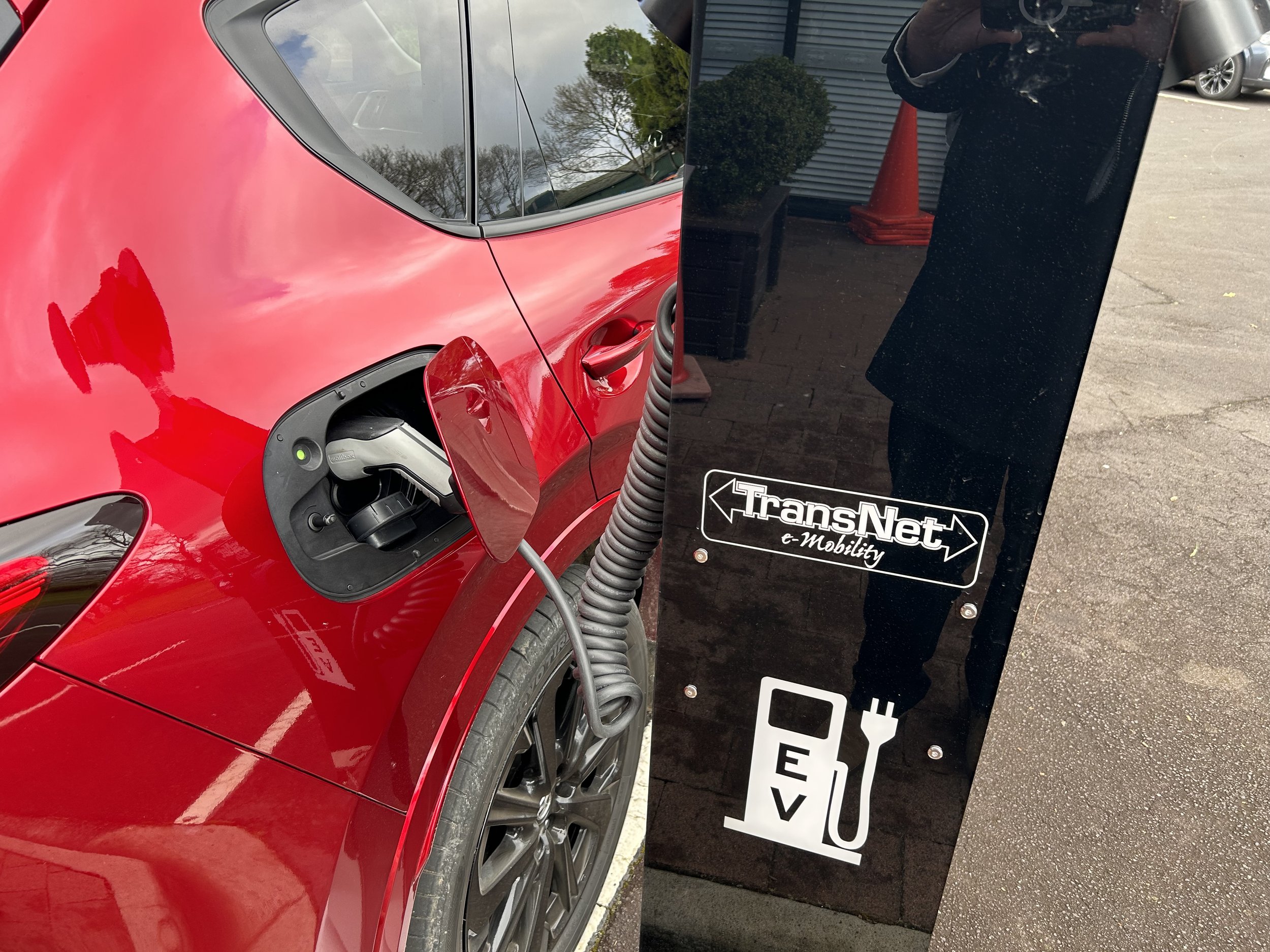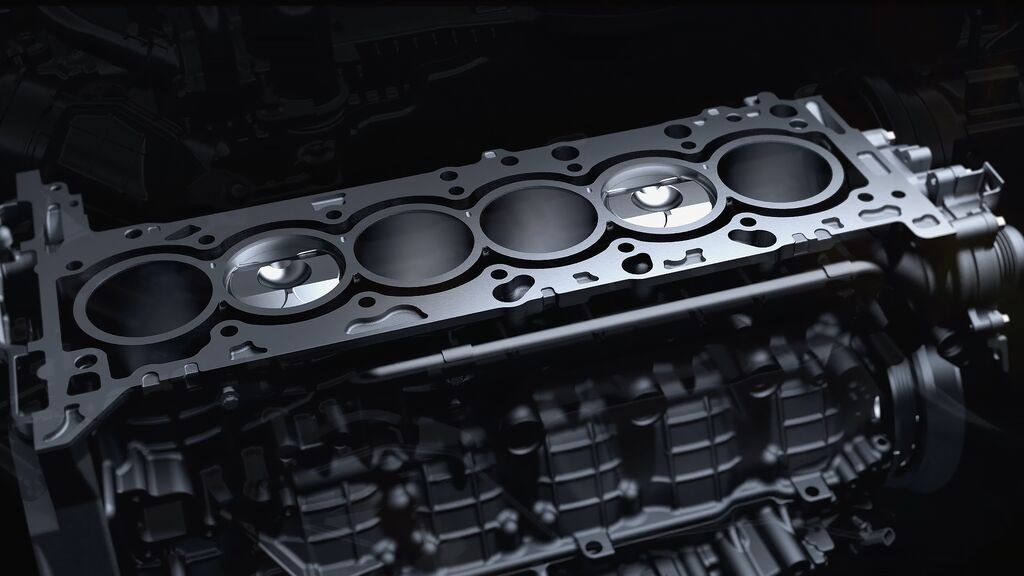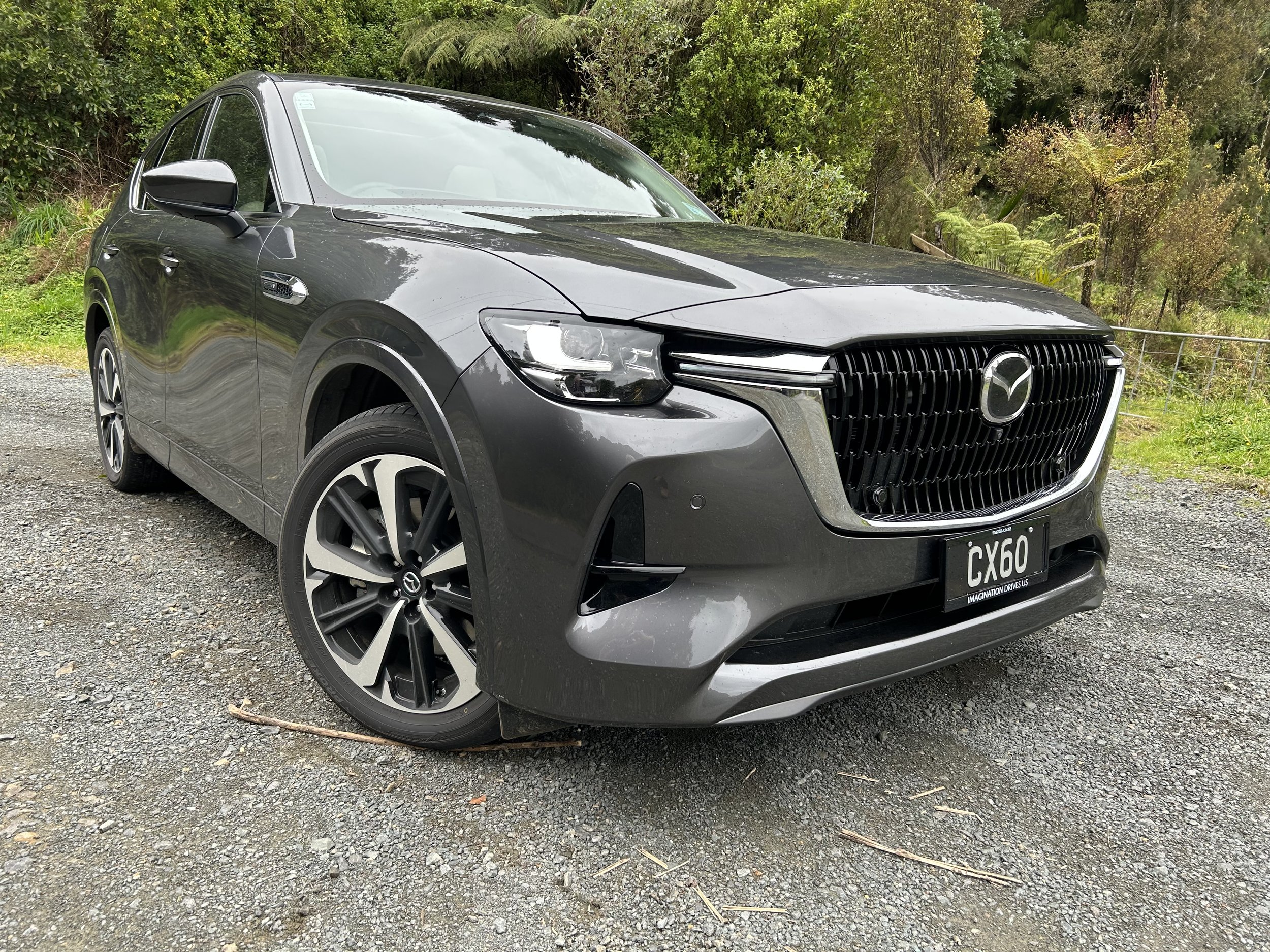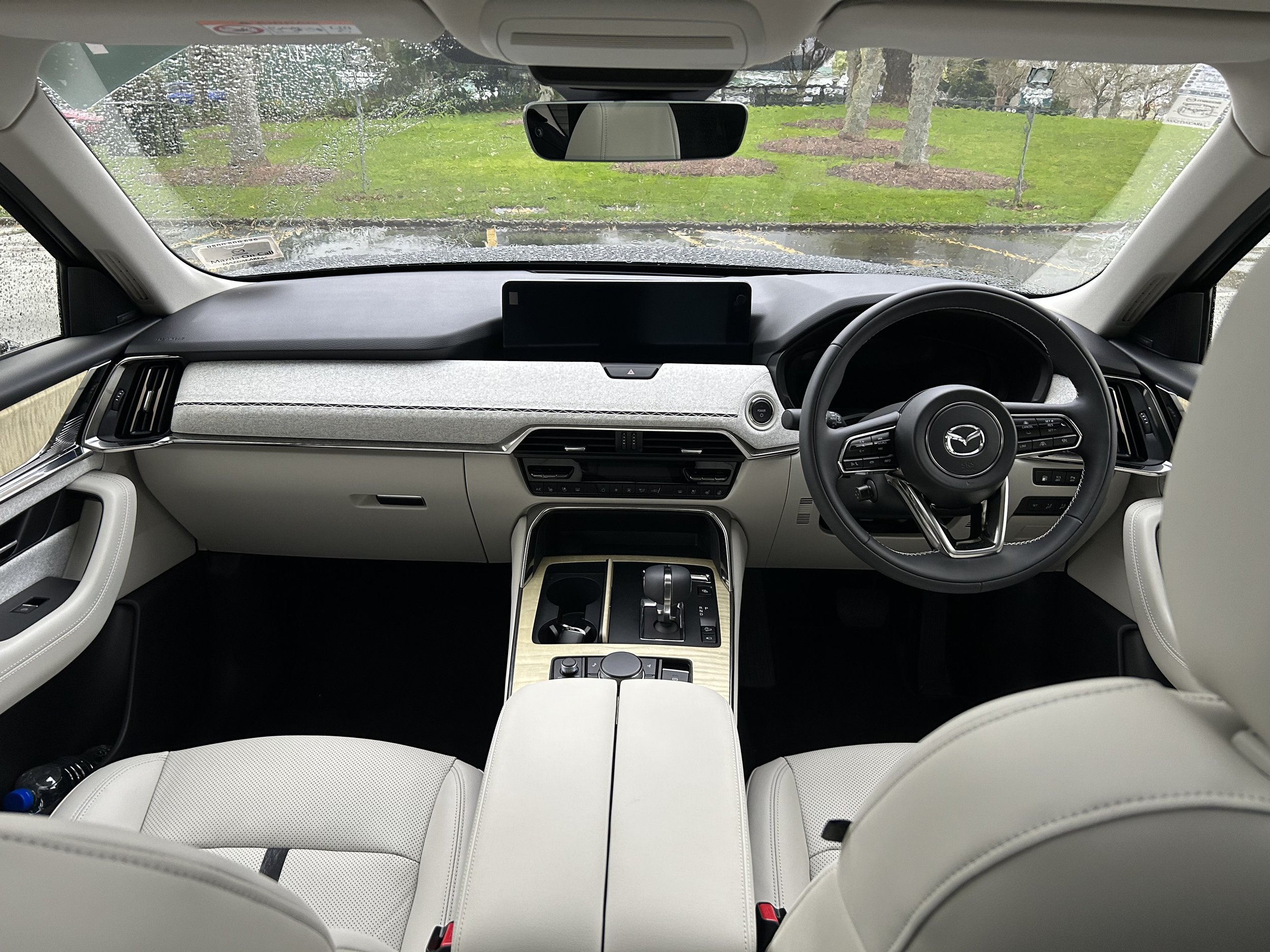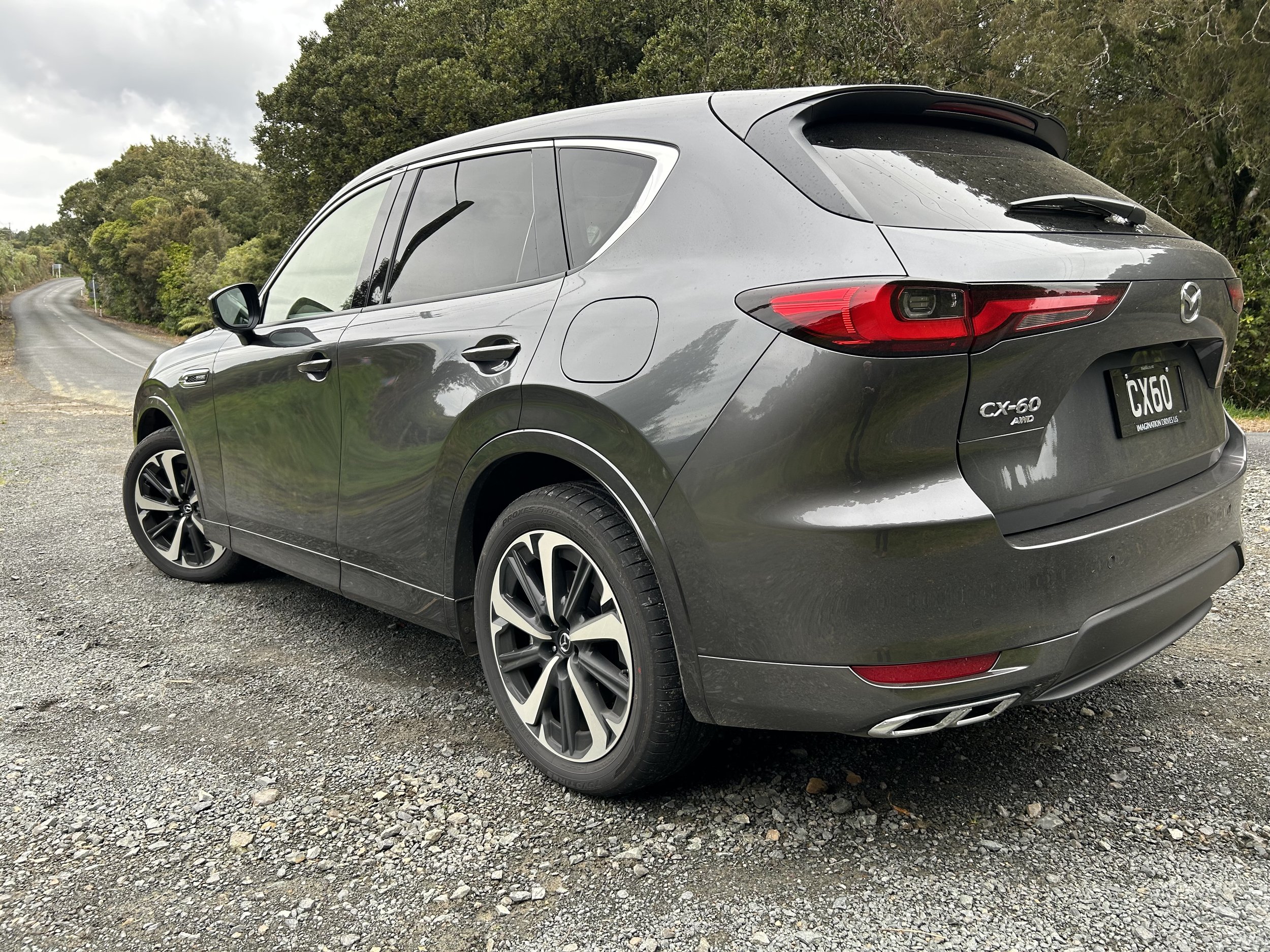Mazda CX-60/CX-90 first drive: Going for gold
/Hiroshima moves up a price class by adding extra plush - and engineering panache - to the usual premium play.
WHO will buy and how many will sign up are standard questions raised at any vehicle release.
In respect to the CX-60 and CX-90? Largely radio silence. Mazda New Zealand says it has a good idea about how much interest will magnet toward these new entrants, closely-linked styling-wise, equally plush in fit-out, all atop a new common platform, all with fresh new eight-speed automatic-allied petrol drivetrains. One in a cylinder count all direct rivals have consigned to the past. The other primarily far more attuned to Clean Car times, a four-pot with actual electric-pure edge.
They’ve repetitively crunched a lot of numericals, studied the trends to no small end, weighed up against every conceivable opposition. The forecasts for the CX-60, purely a five-seater sports utility in all-wheel-drive, and its equally luxury-themed, larger and rear-drive seven seat CX-90 big brother have them feeling positive.
But will they share any of that data to support the logics at play? No way, sorry. To all questions relating to anything - from anticipated volume count to in-house perception, in respect to CX-60, about which particular trim and powertrain choice might shine - there’s a head-shaking “sorry.” What should we read into this?
Those who have seen the stickers and specs will know what’s at stake. Mazda’s moving upmarket. Not fully, but far enough to price at new levels for the brand.
Top dollar is the CX-90, the metallic grey car here. A model that ostensibly sells on family bus competence nonetheless credits, at $92,990, as the largest and most expensive mainstream car yet sold by the make here.
And the plushest. The type provisions in Takami, the make’s well-established luxury codex, but steps up on that luxury aspect to point where even entertaining the idea of allowing it on the school run might seem faintly ludicrous.
But that’s only half the bigger, bolder pitch. It also goes wild on the engine front. A 254kW/500Nm 3.3-litre aided by a 48-volt mild-hybrid system and driving the rear wheels is a big change from the CX-9’s 170kW/420Nm turbocharged four-cylinder, feeding front-drive. The base engine design is obviously a blast back to the past, an old formula largely discarded in car-dom, but in merging electric into the action, Mazda sees a future. It’s not alone in this. Mercedes Benz introduced virtually the same set-up to its E-Class in 2018.
After something of the same, at least in appointment and presentation, but with five seats?
That’ll be CX-60, which spans four richly-provisioned all-wheel-drive choices from just $80,000 to just over $90k, three with Mazda’s first plug-in hybrid, with 241kW and 500Nm - the most grunt of any previous road car in the company’s history.
The PHEV combines a 2.5-litre four cylinder petrol engine with a 100kW electric motor, 17.8kWh battery and eight-speed auto and regardless of being thrusty is also thrifty.
Mazda claims an optimal condition fuel use of 2.3 litres per 100km and just 54 grams per kilometre of CO2, these figures based on WLTP-3 factoring. Previous data has been to the outmoded NEDC scale.
It also says the tech will deliver 63km (76km on NEDC) of claimed pure electric driving range, at sub-100kmh pace. This engine also dedicates to 95 octane. Recharging is AC type 2.
The PHEV starts as a $78,990 Touring, lifts to a new-to-market Homura mid-level specification at $87,990 and tops out in a $90,990 Takami.
CX-60 Homura will also avail with the 3.3-litre six, but detuned to 209kW and 450Nm torque, at $81,990.
So how do they drive? The big six as experienced in the big boy is, unsurprisingly, suave, characterful in note and, with that electric involvement, all the more relaxingly muscular than the best ones (salute BMW and Nissan) from back in the day. Kids, ask your parents.
It’s so good that you wonder why we ever thought a turbo four could be better … until, that is, you drive this new electric-assisted turbo four.
The PHEV as it provides in CX-60 is also so refined, smooth and yet reactive enough you wonder why it wasn’t also proposed for the larger car. Did packaging considerations with the CX-90’s third row seat foil? Or was Mazda so committed to the six-cylinder, which has been in development for quite a while (you’ll recall it featuring in concepts rolled out over the past decade) they just couldn’t u-turn from it?
Driving both over the same set course of 72 kilometres’ distance, spanning motorway, country road and urban areas south of Auckland, was an ideal proposed for the launch day schedule.
Unfortunately, timing went awry, to point only the morning run, with CX-90, occurred. The afternoon outing with a CX-60 PHEV whittled to half an hour at the wheel and about 30kms’ clocked, mostly restricted to a winding, hill country blast.
Impressions? The quality of both cars’ development came through; both are big and visually bulky, yet their dimensions were by and large beautifully masked on even the rural routes, though the Achilles heel of both might be a slightly stiff ride over lumpy surfaces.
Insofar as mechanical competence goes? That will have to await another day … or, more likely in respect to the PHEV, a number of consecutive days. That tech typically requires considerable mileage, much more than was on offer, to fully reveal strengths and weaknesses. It’s one thing to experience with full electric assist, but the fundamental question is always the same: How will it go when that depletes?
The CX-90 was an easier nut to crack on the day. On it’s sole occupant run, this surprisingly driver-oriented model delivered a consumption of 9.7 litres per 100km for the stint; 0.6L/100km above maker claim.
My driving was in deference to speed limits - most of the run was in sub-100kmh zones - and by and large avoiding the Sport mode, which it arguably doesn’t need.
A colleague who ran the same course in the performance setting, and perhaps pressed harder, claimed a 11.2L/100km return. That’s sports sedan territory. That it goes best on 95 or greater, but will stomach 91 octane, will mean some saving at the pump, but still …
The CX-60 PHEV’s proposal as a complete antithesis was not challenged this time. The example I experienced went out with an almost fully-charged battery, returned with around 40 percent of that assist utilised … and was attesting still 2.3L/100km consumption.
Mazda NZ experience is that the vehicle operates as a conventional hybrid when active assist tails off. It also contends the battery always has something to give and also easily recuperates, to a point, from regenerative involvement.
On the other hand, it also acknowledges that a provision that engine as a power generator to replenish the battery when on the move is truly a last resort that requires careful consideration, as it does tangibly increase consumption. Not ideal in a variant that for packaging consideration runs a smaller fuel tank than the six-cylinder kind, with just 50 litres’ capacity.
Mazda says one benefit of CX-60 having a relatively modest-sized battery is that it is very well suited to home recharging. This is really an overnight ask with the provided three-pin plug lead, especially if you’re taking advantage of off-peak charges, but isn’t too arduous from a commercial type. Keep up a good home-based regime, drive short distances - as most of us do - and behave conservatively and an owner might never have to refuel, Mazda proposes.
It’s a nice ideal, but one set to be undermined by the whole ‘Zoom Zoom’ mantra. As has become very evident, Mazda doesn’t make quiet-living cars; nothing in its range, not even the essentially urban-oriented MX-30, is adverse to a good strop.
The CX-3 and CX-5 have already stamped authority as good choice SUVs for the enthusiast driver, but CX-60 is going to teach both some lessons. Development commitment to a ‘celebrate driving’ vision and desire to incorporate a dollop of DNA from the famously nifty MX-5 appears to have been taken seriously.
Confident and accurate handling, which aligns with a poised ride to deliver tight cornering and minimal body roll suggests it might win standing as one the better bigger SUVs from a driver perspective.
The natural talent here is abetted by Kinetic Posture Control, which dabs the brake on the inside rear wheel to maintain cornering. KPC debuted on the latest MX-5 and arguably is more useful on a substantial SUV that ultimately for the sake of occupant well-being needs to toe the line than on a roadster that’s born to be chuckable.
It doesn’t disappoint in the performance department, either. You cannot feel the exact moment when motor and engine work fully together, but the outcome of that interaction is very plain, with 100kmh from a standing start in under six seconds when in Sport mode.
How it compares with the CX-60 that avails with the six-cylinder? It wasn’t driven on the day, but clearly this outlier in $81,990 Homura format stands as an intrigue demanding consideration.
Mazda proposes the six-pack CX-60 is likely to be bought by those who undertake long distance driving, perhaps in a provincial setting, and don’t see need to go whole hog to the CX-90.
The engine detunes to 209kW and 450Nm here and though it clocks a solid 1949kg at the kerb, it’s nonetheless l00kg lighter than the PHEV and has 200kgs less to heft than the CX-90, so there’s likely to be advantage on the dynamic side.
Economy-wise, it’s no threat to the plug-in saint, the 8.2L/100km cited reminding why it has a larger, by eight litres, fuel tank capacity than the PHEV. The 190 grams per kilometre CO2 emissions means it also copes a Clean Car penalty, though not as much as the CX-90. Paying $2875 tax on the CX-60 against the $4025 impost the CX-90 hefts on account of having a 210g/km output might be enough in itself for family buyers to think carefully about whether they REALLY need that third row of seats.
All the same, when Clean Car avoidance is preferred, then the PHEV is the go. The entry $78,990 Touring earns a $4025 rebate while the alternate $87,990 mid-grade choice, also a Homura, and flagship $90,990 Takami are fee neutral.
Mazda’s pitch goes further than these intriguing drivetrains. The placement of both models takes this make into the premium sector.
How seriously consumers consider Mazda aspiration to become a credible alternative to the traditional mainstream premium, which in effect means non-German, is obviously the big test here. It will be interesting to see what cars are offered for trade-in and what toff brand allegiances are swayed.
Excellent fit and finish has long tended to be a prevailing element of Mazda’s product; it knows perception of quality is a core factor to purchase consideration.
Now that it has some playing in a higher sphere, the effort to make everything just so seems to have stepped up. The quality of the build, and of the materials used, in both is exceptional, with plenty of soft-touch furnishings and, overall, layouts that offer potential of a real sense of wellbeing on long journeys.
The barometer in this exercise was realistically the previous flagship, the Takami edition of the CX-9 that is now being ushered into retirement. It was very plush; to point where it seemed just too good to expose to uncaring kids.
The CX-90 is $13k more and most of that premium seems to have gone into adding an extra layer of quality; call it Takami-plus. It’s not a Mercedes, but is easily as comfy, as well-provisioned and as exquisitely-trimmed as the much pricier Hyundai Palisade, as one example. It’s easy to imagine some fastidious owners might well be asking for shoes off, if not complete scrub-downs, as requisite for school aged-occupant admission. The CX-60 is similarly lavish at highest spend, of course, but because of its size the larger car just feels more palatial.
When absolute space is asked for, the CX-90 is the ultimate choice. The first two rows are massively roomy and, though I didn’t try the rearmost pews, they appear reasonably sized and relatively accessible.
The CX-60 isn’t as commodious within its main cabin, which might surprise since it’s a bigger than the average segment choice. Yet the substance is partly due to the flat nose and high level, expansive bonnet. The cabin proper is not cramped, but as a tall person, I found that having setting the front seat to suit my frame, the provision for another ‘me’ seated behind was a bit tight, though mainly in respect to legroom, an issue which exacerbates when the front seat is set very low; in that position there’s barely room to put your feet into the gap between the seat base and the floor. Even though the car I tried this with had a sunroof, headroom on the other hand was still good.
All CX-60s run 20 inch wheels with 235/50 rubber, each derivative having a specific wheel styling, have power tailgates - hands-free on all but the entry Touring - and 12.3 inch touchscreens, Bose audio (eight speakers in Touring, 12 elsewhere), reversing camera, front/rear parking sensors, heated front seats with electric adjustment, sat-nav, wireless Apple CarPlay/Android Auto with wireless device charging and have leather trim.
Safety provision is high, with every model having eight airbags. Antiskid brakes, blind spot monitoring, Isofix child anchors, radar cruise control with auto stop-go, driver attention alert and monitoring are standard. All but the Touring have cruising and traffic support, a system which consists of a headway control function and steering assist function for reducing driver fatigue when in heavy traffic.
The paddle shift transmission, also used by CX-90, has normal, sport, off-road and towing modes with both engines, the PHEV also offering an EV mode.
Dynamic stability control, emergency stop signalling, front cross traffic alert, hill descent control, hill launch assist, intelligent speed assist, lane departure warning and lane keep assist, smart brake support, traction control, traffic sign recognition and tyre pressure monitoring also feature.
What’s just as appealing is that, though there is more than can found in other Mazdas, everything is delivered in a way that will seem familiar.
As in other product, the infotainment interface is controlled by a dial and supported by a raft of actual buttons and switches. Enabling simple scrolling through logical menu options makes it one of the easier systems to use.
Mazda also abets with driver assistance that starts with an invitation to enter your height, which is enough information for it to strive to tailor the driver position to what Mazda decrees to be the most perfect. Once that is sorted, the car memorises who you are with facial recognition. Beyond that, there are options to adjust the sensitivities of the safety assist involvements; across three levels: early, normal and late. You can also opt for vibration or sound alerts.
The one question hanging is … where’s the diesel? When Mazda took NZ journalists to Japan to experience CX-60 months ago, that was the only type they experienced. However,. turns out that was because the compression ignition kind was all that was available.
It was never going to be offered here, on grounds that there’s belief electrification brings the same outcomes but more efficiently, including ability to tow.
They point out the PHEV’s 2500kg rating is 500kg above the diesel’s. For all that, they acknowledge a CX-60 diesel has already been privately imported (and displayed at Mazda outlets) and they expect more examples to follow. But it’ll never sell brand-new, they say.
The star of the show is clearly the CX-60 PHEV. Even if you avoid driving it abstemiously, it promises to be the fuel saver saint within Mazda-dom. And credit to this firm for doing everything in-house; you can only imagine the development cost.
On that matter, you might wonder why Mazda didn’t just call on strategic partner Toyota to provide the means of propulsion for its first PHEV. Especially as the CX-60 is such a similar mechanical proposition to the RAV4 PHEV. Toyota’s is also a 2.5-litre Atkinson-cycle four-cylinder petrol engine with a circa-18kWh battery and with a driven axle at each end. On that subject, Mazda is delicate. They’re not dissing Toyota’s way, but simply say they are happy with their own, with which the ICE side is based on that used in the CX-5 and the electric side developed from the MX-30 EV.
That everything comes at a price is the challenge. These are not inexpensive cars. Mazda NZ choosing to included like-sized SUV exotics from Lexus, Audi and Volkswagen as the barometer ware for its dealers training exercises with CX-60 was a first for a make more used to plucking out Toyotas, Fords and Nissans.
Mazda has always set out to be the premium choice within the mainstream, and its aspiration to break into the luxury sector is hardly new. That ideal fuelled the still-born Amati brand planned for 1991 and was the impetus for the short-lived Euros and Efini pitches that came out of that.
These products could be a panacea for Mazda’s diminished market share and provide a profile lift at time when the national sales network is undergoing reconfiguration, but with the car industry steeling for the remainder of the year delivering sales stagnation after the highs of a pre-July 1 Clean Car registrations rush, it’s understandable why confidence is being expressed carefully.
The writer attended this event as a guest of the distributor, with travel and a meal provided.



